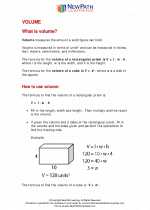Perpendicular Lines
Perpendicular lines are two lines that intersect at a right angle (90 degrees). When two lines are perpendicular, it means that they form four right angles where they intersect.
Properties of Perpendicular Lines
- Perpendicular lines have slopes that are negative reciprocals of each other. If the slope of one line is m, then the slope of the perpendicular line is -1/m.
- The product of the slopes of two perpendicular lines is -1.
- Perpendicular lines form right angles where they intersect.
Examples of Perpendicular Lines
Example 1: The lines y = 2x and y = -1/2x are perpendicular because the product of their slopes is -1.
Example 2: The lines x = 3 and y = 4 are perpendicular because one line is vertical (x = 3) and the other is horizontal (y = 4), and their intersection forms a right angle.
How to Determine if Lines are Perpendicular
To determine if two lines are perpendicular, you can follow these steps:
- Find the slope of each line.
- Take the negative reciprocal of the slope for one of the lines.
- Compare the negative reciprocal with the slope of the other line. If they are equal, the lines are perpendicular.
Practice Problems
1. Determine if the lines y = 3x + 2 and y = -1/3x - 4 are perpendicular.
2. Find the equation of a line that is perpendicular to y = 2x + 5 and passes through the point (3, 4).
3. Given the line 2x - 3y = 6, find the equation of a line perpendicular to it that passes through the point (4, -1).
4. Determine if the lines 3x - 4y = 8 and 4y = 3x - 5 are perpendicular.
Summary
Perpendicular lines intersect at right angles and have negative reciprocal slopes. To determine if two lines are perpendicular, compare the slopes using the negative reciprocal property.
Remember to practice solving problems involving perpendicular lines to strengthen your understanding of the concept.
.



